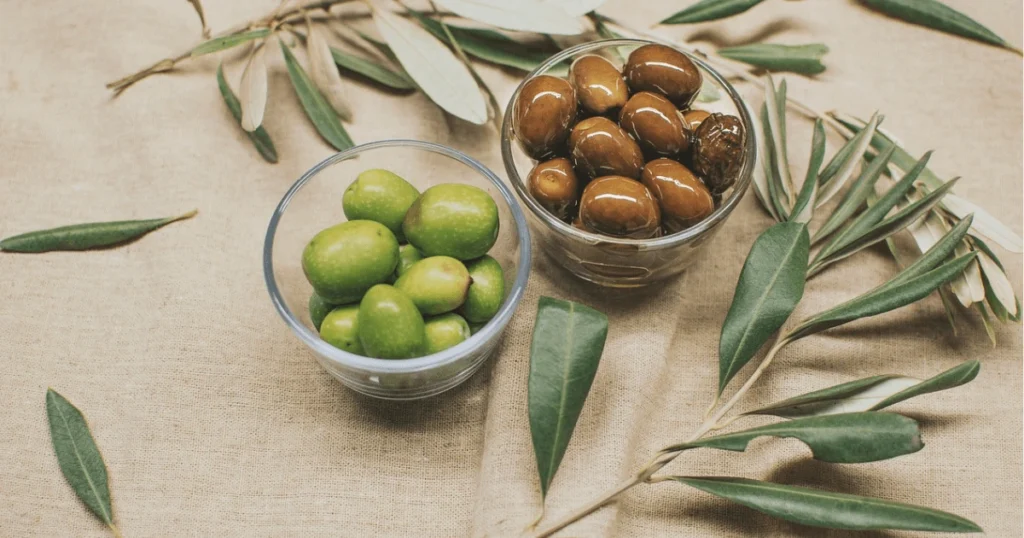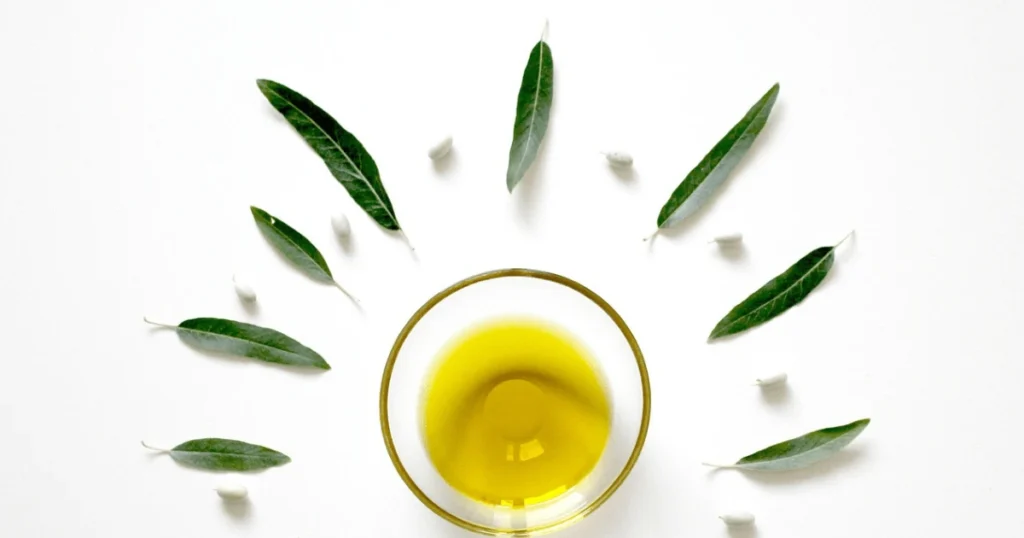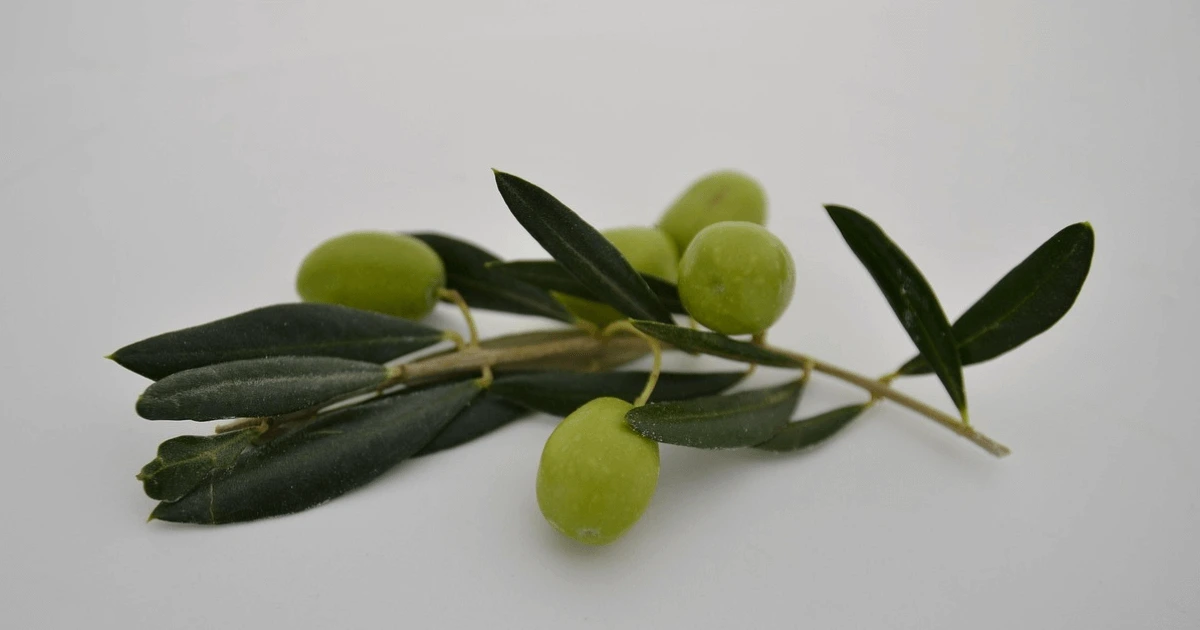Can Dogs Eat Olives? Discover the Benefits and Hidden Dangers
Table of Contents
Your Pup’s Eyes Say “Yes” — But Should You?
You’re snacking on olives — those briny little flavor bombs — and your pup is giving you the look. Tail wagging. Eyes locked. A silent plea for just one bite.
But wait… can dogs eat olives?
The short answer: yes, dogs can eat olives — but only if you serve them the right way. These little Mediterranean morsels aren’t toxic to dogs, but not all olives are created equal. Some are safe, others can be downright dangerous.
In this guide, we’ll walk you through the health perks, serious risks, and specific types of olives to avoid, so you can decide whether to share your next olive snack — or keep it all to yourself.
✅ Are Olives Good for Dogs?
So, let’s get right to it: are olives good for dogs?
In moderation, and only when served plain and pitted, olives can offer a few small health benefits. They contain monounsaturated fats, a smidge of fiber, and antioxidants like vitamin E and polyphenols, which may help support your dog’s immune system and overall cell health.
Sounds great, right? Sort of.
Here’s the truth: while olives do contain some good stuff, they’re not a necessary part of your dog’s diet. If your pup is already eating a high-quality, balanced commercial food, they’re getting everything they need — no olives required.
That said, if you’re feeling generous and your dog tolerates them well, a plain, unsalted olive (or two) can be a fun little treat. Just don’t go tossing them into your dog’s bowl every day — olives are a snack, not a supplement.
⚠️ Or… Are Olives Bad for Dogs?
Let’s flip the question: are olives bad for dogs?
Sometimes, yes — they can be.
While plain olives aren’t toxic, certain types and preparations can quickly turn this innocent snack into a health hazard. The main culprits?
- Brine and salt: Most store-bought olives are soaked in salty brine. That high sodium content can lead to dehydration, high blood pressure, or even sodium poisoning in dogs — especially smaller breeds or those with heart or kidney issues.
- Pits: Giving your dog olives with the pit still inside is a big no-no. The hard stone is a choking hazard, can crack teeth, or worse, block your dog’s intestines.
- Fillings and flavorings: Stuffed olives might be delicious to you, but they’re often packed with garlic, cheese, hot peppers, or herbs — many of which are toxic or irritating to dogs.
And let’s not forget individual sensitivities: dogs with heart disease, kidney problems, allergies, or sodium sensitivity should steer clear of olives altogether.
So yes, olives can be bad for dogs — if they’re not served smartly.
Health Benefits of Olives for Dogs
Now for the good news: when served correctly, olives do offer a few small health perks.
- 🫒 Monounsaturated fats — These healthy fats can support skin health and offer anti-inflammatory properties.
- 🌿 Antioxidants like vitamin E and polyphenols — These help fight free radicals, support immune function, and may contribute to cell protection.
- 🔋 Iron and copper — Trace minerals that play roles in energy metabolism and immune defense.
But — and this is key — these nutrients are already included in any decent dog food. So while olives can add a little boost, they’re not a necessary super-snack. Think of them more as a novelty treat than a nutritional essential.
🫒 Can Dogs Eat Green Olives vs. Black Olives?

If you’re wondering whether color matters when it comes to olives and dogs — good question. So, can dogs eat green olives? What about can dogs eat black olives?
The answer: Yes to both, if prepared properly.
Here’s the breakdown:
- 🟢 Green olives are picked before they fully ripen. They’re usually firmer, slightly more bitter, and higher in sodium — especially if they come brined.
- ⚫ Black olives are ripened on the tree and tend to be softer, milder in taste, and often lower in salt (but not always — check the label).
Nutritionally, the difference is minor. Both contain monounsaturated fats, small amounts of vitamin E, and trace minerals. But the real safety factor isn’t the color — it’s how the olive is processed.
👉 The safest option for dogs?
Plain, pitted, unsalted olives — whether green or black.
Skip anything in brine, oil, vinegar, or a mystery marinade. No pits. No salt. No seasoning. Just clean, olive-y goodness in a bite-sized, dog-friendly form.
❌ Can Dogs Eat Kalamata Olives or Stuffed Olives?
Let’s talk specifics: can dogs eat kalamata olives?
🚫 Not recommended.
Kalamata olives may be delicious on your mezze platter, but they’re usually packed in heavy brine or marinated in oils and herbs — a salty, seasoned combo that’s bad news for dogs.
Even worse? Stuffed olives.
Whether filled with garlic, blue cheese, pimentos, anchovies, jalapeños, or anything else meant for human taste buds, these are off-limits. Garlic and onions are toxic to dogs, while dairy and spicy fillings can trigger digestive distress or even allergic reactions.
🪨 Can Dogs Eat Olives With Pits?
If there’s one olive rule you never want to break, it’s this:
No pits. Ever.
So, can dogs eat olives with pits?
Absolutely not — and here’s why:
- Choking hazard: Olive pits are just the right size to get stuck in your dog’s throat, especially in small or medium breeds.
- Dental damage: One crunch can crack or chip a tooth — hello, vet bill.
- Intestinal blockage: If swallowed whole, the hard pit can block your dog’s digestive tract, which could require surgery.
Even though olives themselves are safe in moderation, can dogs have olives with the pit still in? That’s a hard no.
👉 Always remove the pit before feeding your dog an olive. Better yet, buy pre-pitted varieties and double-check for any missed stones.
🧂 The Hidden Danger: Brined & Salted Olives
Here’s where things get salty — literally.
Most olives you find in stores are packed in brine, a salt-heavy solution that helps preserve and flavor them. But for dogs? That salt can be dangerous.
Why Sodium Is a Problem:
- Dogs don’t handle salt the same way humans do.
- Too much sodium can cause dehydration, increased blood pressure, or even salt toxicity in large quantities.
Signs of Salt Toxicity in Dogs:
- Vomiting or diarrhea
- Lethargy or confusion
- Excessive thirst and urination
- Seizures (in severe cases)
Even just a few brined olives can push your dog’s sodium intake too high, especially in smaller breeds.
Safer Alternatives:
🥫 Choose fresh or water-packed olives (check the label — no salt added!)
🧼 Rinse canned olives thoroughly to remove surface brine, but still feed in strict moderation.
🧮 How Many Olives Can Dogs Eat?
Now the golden question:
How many olives is too many?
Portion Control by Dog Size:
- Small dogs (under 20 lbs): ½ to 1 olive, max
- Medium dogs (20–50 lbs): 1–2 olives
- Large dogs (50+ lbs): 2–3 olives
These are occasional treat guidelines — not daily snacks.
Frequency Tips:
- Think of olives like bacon: tasty, but not a regular feature.
- Once or twice a week is plenty — and always observe for any signs of sensitivity.
Watch for Reactions:
- Upset stomach (vomiting, diarrhea)
- Gas or bloating
- Allergic responses (itching, paw licking)
If your dog has never tried olives before, start with a tiny piece and monitor closely.
Bonus: Is Olive Oil Safe for Dogs?

Okay, so olives might be a “sometimes” snack — but what about the liquid gold they come from?
Short answer: yes, olive oil is safe for dogs — in small amounts.
In fact, many vets and pet nutritionists recommend extra virgin olive oil as an occasional supplement. It’s easier to digest than whole olives, and doesn’t carry the same risks (like pits, salt, or seasonings).
Why Olive Oil Can Be Beneficial:
- 🐾 Supports skin & coat health thanks to omega-9 fatty acids
- 💩 Aids digestion and can help dogs with constipation
- ❤️ Contains antioxidants that support immune function
Olive Oil vs. Whole Olives: What’s Better?
| Feature | Olive Oil | Whole Olives |
|---|---|---|
| Safe in moderation? | ✅ Yes | ✅ Yes (if pitted & plain) |
| Risk of salt/pits? | ❌ No | ⚠️ Yes |
| Nutrient density | ✅ Concentrated fats | ☑️ Mild nutrient value |
| Ideal usage | As a food topper | As an occasional treat |
If you’re choosing between the two, a few drops of olive oil on your dog’s food might be a smarter, safer option than handing over a whole olive — especially for dogs with sensitive stomachs or dental issues.
🔔 Reminder: Always introduce new foods gradually, and consult your vet before adding oil to your pup’s diet regularly.
🐾 Final Verdict: Can Dogs Eat Olives Safely?
So, can dogs eat olives safely? The simple truth is yes — but with important caveats.
✅ Olives can be a tasty, occasional treat for your dog — but only if they are:
- Plain (no seasonings or flavorings)
- Pitted (never with the stone inside)
- Unsalted or fresh/water-packed (avoid brined or heavily salted olives)
Stick to very small amounts, and always watch for any signs of digestive upset or allergies.
If your dog has underlying health conditions—like heart, kidney issues, or salt sensitivity—or if they accidentally eat large quantities or pits, contact your veterinarian immediately.
When in doubt, your vet’s advice is your best guide to keeping olive treats safe and fun.
🐶 FAQs: Quick Answers for Curious Dog Owners
Q: Can dogs eat olives from a jar?
A: Only if the olives are plain, pitted, and unsalted. Most jarred olives are packed in salty brine, so rinse well and serve sparingly.
Q: What if my dog ate an olive pit?
A: Olive pits can cause choking or intestinal blockages. Monitor your dog closely, and if you see vomiting, lethargy, or signs of distress, see a vet right away.
Q: Are olives safe for puppies?
A: It’s best to avoid olives for puppies. Their digestive systems are more sensitive, and any new food should be introduced carefully under vet guidance.
Q: Can dogs have olives every day?
A: No. Olives are treats, not a daily food. Overfeeding can lead to sodium overload or digestive issues.
Q: Is olive oil better than olives for dogs?
A: Olive oil is generally safer and easier to digest, making it a better choice as a supplement or food topper — but always use in moderation.

